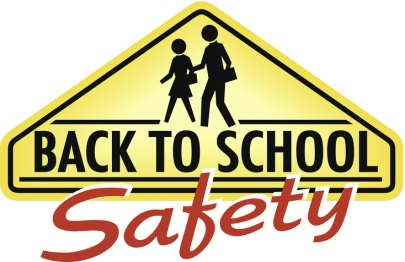Ensuring Safety and Security: Law Enforcement’s Role in the Back-to-School Season

Introduction
As summer draws to a close and the back-to-school season approaches, ensuring the safety and security of students, educators, and school staff becomes paramount. In this transitional period, law enforcement agencies play a crucial role in creating a safe environment that promotes effective learning and a sense of well-being within educational institutions. This article delves into the significance of law enforcement’s involvement in back-to-school safety and highlights strategies and initiatives aimed at fostering a secure learning environment.
Creating Safe School Zones
The transition back to school involves an influx of pedestrian and vehicular traffic around educational campuses. Law enforcement agencies collaborate with schools to implement measures that enhance safety during drop-off and pick-up times. These measures often include designated crosswalks, speed limit enforcement, and the presence of officers to ensure compliance with traffic regulations.
Engaging in Safety Education
Law enforcement officers actively participate in safety education programs that emphasize the importance of following traffic rules and practicing vigilance in school zones. These programs may involve workshops, seminars, and outreach events aimed at both students and parents. By imparting knowledge about safe pedestrian behavior, responsible driving, and the dangers of distracted driving, law enforcement helps create a culture of safety in the community.
Emergency Response Planning
Schools and law enforcement collaborate to develop comprehensive emergency response plans that address various scenarios, including natural disasters, medical emergencies, and potential security threats. Regular drills and exercises are conducted to ensure that all stakeholders are well-prepared to respond effectively in crisis situations. The partnership between law enforcement and schools extends to fostering effective communication between school officials and first responders.
Preventing Bullying and Cybersecurity Concerns
Safety in the digital age also encompasses addressing cyberbullying and online threats. Law enforcement agencies often work closely with schools to educate students about responsible online behavior, the dangers of cyberbullying, and the importance of reporting any concerning activities. By promoting digital literacy and creating a supportive environment, law enforcement contributes to preventing incidents of cyberbullying and fostering a positive online culture.
Mental Health and Support
The back-to-school season can be stressful for students, and law enforcement agencies recognize the significance of mental health support. Many departments are trained to recognize signs of distress and mental health issues in students. They collaborate with schools to provide resources and access to counseling services, helping to create a nurturing environment that promotes both physical and mental well-being.
Community Policing and Resource Allocation
Law enforcement agencies engage in community policing strategies that facilitate positive interactions between officers and students. These efforts aim to build trust and establish officers as approachable figures who can provide guidance and support. Such relationships are essential for early intervention in potential issues and for creating an atmosphere of safety and cooperation.
Conclusion
The collaboration between law enforcement agencies and educational institutions plays a vital role in ensuring a safe and secure back-to-school season. By focusing on various aspects of safety, including traffic management, emergency response, cybersecurity, mental health, and community engagement, law enforcement contributes significantly to fostering an environment conducive to learning and personal growth. As students embark on their academic journeys, the dedication of law enforcement to their well-being remains a cornerstone of a thriving educational experience.
By David B. Collins, Jr.
